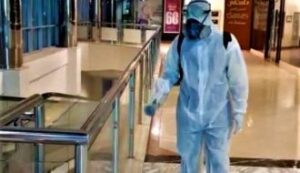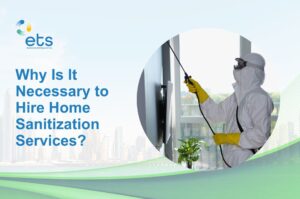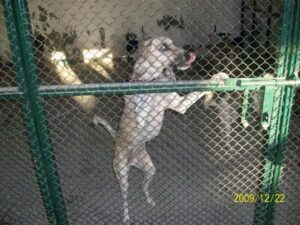 It is well known that the scope of sanitation (or general cleaning and sanitization) is very broad, and can be defined as “the promotion of hygiene and prevention of disease by the maintenance of sanitary conditions; characterized by or kept in cleanliness”. The concept of sanitation, as it relates to pest management, is simple: pests must have food, water, and harborage to survive. By maintaining sanitary conditions, eliminating the conducive areas, and concealing routes of movement for pests, we control pest populations. We definitely say that sanitation is pest control.
It is well known that the scope of sanitation (or general cleaning and sanitization) is very broad, and can be defined as “the promotion of hygiene and prevention of disease by the maintenance of sanitary conditions; characterized by or kept in cleanliness”. The concept of sanitation, as it relates to pest management, is simple: pests must have food, water, and harborage to survive. By maintaining sanitary conditions, eliminating the conducive areas, and concealing routes of movement for pests, we control pest populations. We definitely say that sanitation is pest control.
- Sanitation in Food Plants
- Sanitation in Warehouses and Grain Storage Facilities
- Sanitation in Health Care Facilities
1 – Sanitation Programs in Food Plants
Sanitation programs in food plants must have the full support of top-level management (presidents of companies) to be effective. These programs require that plant sanitarians and quality assurance managers (trained in fields such as bacteriology, chemistry, sanitary engineering, and entomology) should be involved with many aspects of the pest management and sanitation practices of the food plants.
The three main components of sanitation practices in food plants that are important in pest management are general housekeeping, organization of stored goods, and waste disposal. Housekeeping refers to maintaining the deadliness of buildings and all equipment associated with the production, handling, and storage of food (inside and outside the plant). Pest management professionals can aid in identifying areas where improper housekeeping contributes to or causes pest problems.
Cleaning of interior areas and equipment of the food plant must be thoroughly cleaned to remove visible and hidden debris. Cleaning operations involve dry and wet cleaning procedures by trained professionals. Wet cleaning includes hand cleaning and scrubbing, and mopping to ensure that surfaces are dried properly following wet cleaning. Dry cleaning procedures range from floor sweeping to the use of vacuum cleaning systems.
The outside of the food plant affects pest relationships. Weedy areas can be the source of continual mouse or ground beetle infestations inside the plant. Winds may carry insects from the surrounding areas into the plant. Therefore, you need to keep the doors and windows of the plants closed or properly screened to prevent pest entry.
Good storage practices are important in maintaining sanitary conditions and preventing pest problems from arising. Infestations of insect and rodents in storage areas can easily spread to the rest of the plant. Food-related materials must be stored in tightly closed containers or packages to prevent contamination and discourage pest infestation.
Proper collection and disposal of waste materials are essential components of the food plant sanitation program. This is necessary to prevent attracting pests or providing them with harborage and breeding sites. Removing the waste is required to eliminate a breeding medium for flies and attract many other pests to the plant. Also, a sufficient sewer system must be in place and in good repair. Pest problems develop when sewage pipes leak underground or in hidden areas.In order to design, implement, and maintain the sanitation program, food plant managers are recommended to use the Hazard Analysis and Critical Control Point Program (HACCP) to identify, evaluate, and control food safety hazards.
ETS provides reliable pest control and hygiene solutions to our customers in the food processing industry and continues to provide the best sanitation services in all 7 Emirates through contract-based regular services and one-time treatment services too. Our ties with corporate clients are much in demand to enable their undisrupted services and quick and fast services in hours to clean surfaces and provide digital sanitation reports for municipality compliance.
2 – Sanitation in Warehouses and Grain Storage Facilities
It is important to notice that pest control practices in warehouses and food processing areas have many aspects in common, despite the fact that food in warehouses houses are packaged. In warehouses and grain storage facilities, regular inspection is required to determine the presence of stored food pests. Sanitation is at the forefront of preventing infestations. Pest control professionals should inform the facility managers to remove all grain, cereal dust, broken grain, weed seeds, and other debris in which insects can breed, and explain to the owners of the premises that products kept too long in storage can be a major source of infestation to the entire facility. As soon as infested products are discovered, these products should be removed from the premises to prevent the spread of the infestation to uninfested goods.
Pest control professionals and facility managers need to implement all necessary preventive and corrective measures. Efficient stock rotation is considered a simple practice to prevent these kinds of problems. First-in, first-out (FIFO) stock rotation system can be used, in which the stored products are coded by the date received, and placed in storage so that the oldest stock is always in front of the newer stock, and therefore rotated out first. Stock rotation programs can influence pest problems in food plants and warehouses
Sanitation is the first key component necessary for a successful pest management program in warehouses, followed by building design and pest-proofing, storage practices and pallet management, packaging, insect trapping and monitoring, and pesticide applications for both insect and rodent control (if needed).
There are several groups of stored food insects and based on their feeding habits. ETS-trained professionals have the ability to identify these different pests and the knowledge of their feeding habits, biology, and behavior.
3 – Sanitation in Health care Facilities
Sanitation in health care facilities (hospitals, clinics, medical offices, dental offices, nursing homes, etc.) is the process of cleaning and sanitization that include the removal of all visible organic and inorganic materials from surfaces and medical equipment.
Pests such as insects (bed bugs, for example), microbes, and rodents, can carry pathogens that may cause diseases, and reduce the effectiveness of the sanitation process. Pests that do not carry pathogens are considered nuisance pests in these facilities. Integrated pest management, a preventative approach, is an effective method to avoid the activity of these health-related pests or control them, using pesticides if needed, to prevent future infestations.
Sanitation can be accomplished either manually or mechanically using water with detergents. This process is essential before using the high-level disinfection and sterilization process because the materials that remain on the surfaces of instruments interfere with the effectiveness of these processes.
ETS provides comprehensive solutions to health care environments based on an integrated pest management approach suitable for your facility. We offer a preventive approach and specialized procedures to prevent the spread of infectious agents and protect your patients and staff. Recommended actions to be taken by health care employees are offered by ETS to reduce the risk of future pest infestations.



